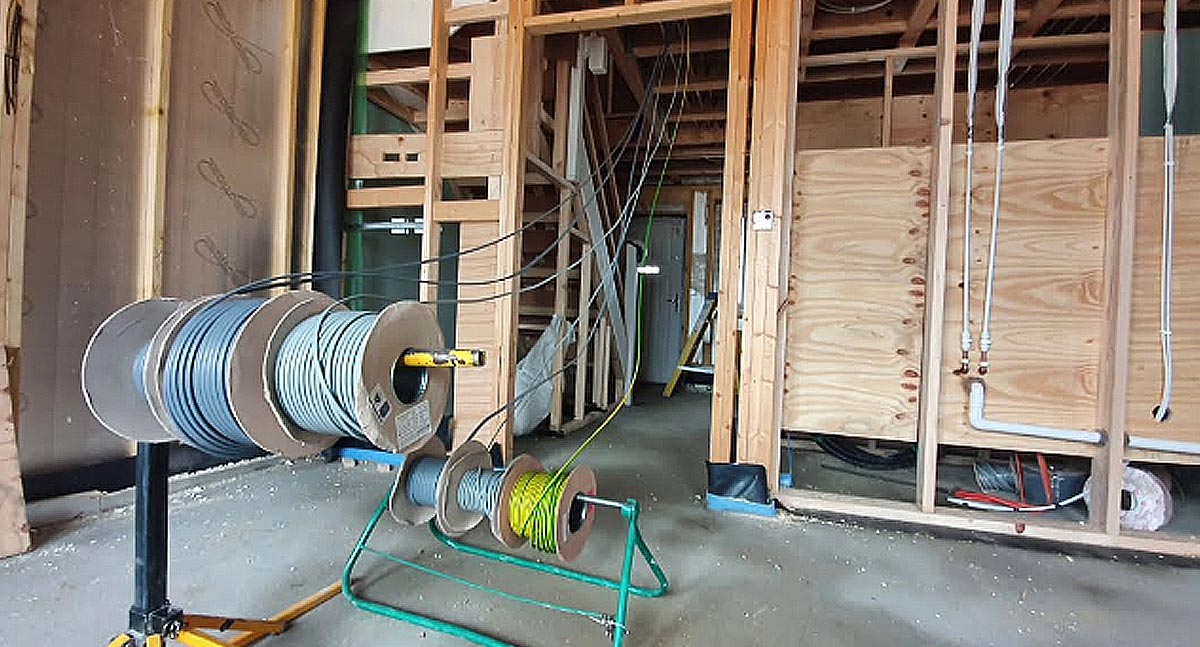Cutting-Edge Technology with BRE Automation Australia Services
Cutting-Edge Technology with BRE Automation Australia Services
Blog Article
Checking Out the World of Electric Setup: Typical Blunders to Stay Clear Of for a Smooth Do It Yourself Job
Starting a do-it-yourself electrical installation project can be a satisfying experience, however it likewise includes its share of possible pitfalls. BRE Electrical. From making sure precaution are fulfilled to abiding with electric codes, the trip right into the globe of electrical work needs focus to detail and precision. The road to a successful do it yourself job is stuffed with usual blunders that might quickly thwart your efforts. By understanding these risks and just how to avoid them, you can navigate the intricate landscape of electrical setup with confidence and make sure a smooth job implementation.
Inadequate Safety Measures
In electric setup projects, forgeting correct safety and security preventative measures can lead to unsafe scenarios that jeopardize both people and property. Improperly grounded electrical systems can lead to electric surges and tools damage. By sticking to safety and security procedures, consisting of appropriate training, making use of safety and security equipment, and following policies, people can minimize threats and advertise a safe and secure electrical setup atmosphere.
Incorrect Wire Sizing

Incorrect cable sizing can likewise influence the total performance of the electric system. Small cords can cause voltage drops, resulting in bad performance of electrical devices and appliances. Extra-large cords, while not as detrimental as small ones, can still result in unneeded costs and inefficient use resources.
To stay clear of these issues, it is important to comply with proper wire sizing standards based on the electrical load requirements of the installation. Consulting with a specialist electrician or referencing the National Electrical Code (NEC) can help ensure that the cords are sized appropriately for a risk-free and efficient electric installation.
Overlooking Grounding Demands
One vital aspect commonly ignored in electric installations is guaranteeing conformity with proper grounding needs. Grounding is a fundamental safety and security feature that secures versus electrical shocks and stops equipment damages.
Basing functions as a pathway for electric currents to flow safely into the earth, protecting against the buildup of excess voltage that might hurt people or devices. It likewise helps to support voltage degrees and enhance the overall efficiency of the electric system. Correct grounding involves attaching electric devices and metal rooms to the ground cable, basing pole, or grounding plate. It is critical to use the appropriate gauge of cable for basing objectives and to ensure all connections are safe and cost-free of corrosion.
.jpeg)
Overlooking Local Building Codes
Ignoring adherence to local building ordinance can present considerable dangers in electric installations, potentially endangering precaution and system dependability. Local building codes are established to guarantee that electrical job satisfies certain safety criteria and guidelines established by the authorities. Neglecting these codes can result in major repercussions, such as electrical fires, electric shocks, or damage to the residential or commercial property.
Regional building ordinance generally cover numerous elements of electric setups, including circuitry methods, outlet placements, circuit security, and grounding needs. Failure to abide by these codes might result in fines, failed evaluations, or the requirement to remodel the whole electric work, causing unneeded expenses and hold-ups.
To stay clear of the risks of ignoring local structure codes, it is essential like it for do it yourself enthusiasts and also professionals to familiarize themselves with the suitable regulations before starting any type of electric task. Consulting with local authorities or hiring an accredited electrical expert for guidance can help make sure that the electrical setup satisfies all the necessary code requirements, advertising a secure and dependable electric system in the future.

Poor Planning and Organization
Have you thought about how thorough planning and view it now company are crucial components in guaranteeing the success and safety of an electric installation job? Poor planning and organization can lead to a myriad of issues, ranging from task delays to significant security hazards. One typical blunder is underestimating the extent of work included in an electric installation, which can cause insufficient materials or inadequate prep work. Without a thorough plan detailing the steps, timeline, and required sources, DIY lovers might find themselves overwhelmed and vulnerable to mistakes.
In addition, lack of organization can result in complication pertaining to the format of electrical elements, potentially triggering malfunctioning links or circuits. Failure to identify cords effectively or track circuit layouts can result in repairing problems down the line. In addition, poor preparation in terms of budgeting and purchase can cause unnecessary costs or hold-ups in finishing the job.
To you could try here stay clear of these risks, put in the time to develop an extensive strategy, collect all called for products and tools in advance, and make certain that you have a clear understanding of the task extent prior to starting - BRE Electrical Solutions. Correct company and preparation are crucial to a successful electrical installation project
Conclusion
To conclude, it is essential to prioritize safety, correct preparation, and adherence to neighborhood codes when embarking on electric installation jobs. Preventing typical blunders such as poor safety preventative measures, incorrect wire sizing, overlooking grounding requirements, and bad planning can make sure a smooth DIY project. By complying with these guidelines, individuals can effectively navigate the world of electrical installment with self-confidence and performance.
Report this page